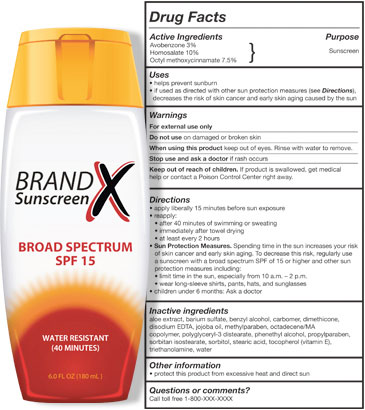 It took more than 30 years, but this month the Food and Drug Administration (FDA) finally announced changes to confusing sunscreen labels and claims.
It took more than 30 years, but this month the Food and Drug Administration (FDA) finally announced changes to confusing sunscreen labels and claims.
Terms like “waterproof,” “sweatproof,” and "sunblock" have been banned. Sunscreens less than 15 SPF can't claim they prevent cancer. And sunscreens must pass an FDA test for equal protection against UVA and UVB rays to be called "broad spectrum." (UVA causes premature aging, UVB causes burning, both are linked to cancer.)
The final regulations include these labeling provisions:
- Sunscreen products that are not broad spectrum or that are broad spectrum with SPF values from 2 to 14 will be labeled with a warning that reads: “Skin Cancer/Skin Aging Alert: Spending time in the sun increases your risk of skin cancer and early skin aging. This product has been shown only to help prevent sunburn, not skin cancer or early skin aging.”
- Water resistance claims on the product's front label must tell how much time a user can expect to get the declared SPF level of protection while swimming or sweating, based on standard testing. Two times will be permitted on labels: 40 minutes or 80 minutes.
- Manufacturers cannot make claims that sunscreens are “waterproof” or “sweatproof, or identify their products as “sunblocks.” Also, sunscreens cannot claim protection immediately on application (for example, “instant protection”) or protection for more than two hours without reapplication, unless they submit data and get approval from FDA.
These measures are necessary, says Lydia Velazquez, PharmD, in FDA’s Division of Nonprescription Regulation Development, because “our scientific understanding has grown. We want consumers to understand that not all sunscreens are created equal.”
“This new information will help consumers know which products offer the best protection from the harmful rays of the sun,” Velazquez says. “It is important for consumers to read the entire label, both front and back, in order to choose the appropriate sunscreen for their needs.”
However, in a press release, the non-profit Environmental Working Group called the FDA changes, "too little and very late." “FDA's action offers some noticeable improvements for consumers, such as limiting misleading claims” said David Andrews, Ph.D, a senior scientist with Environmental Working Group. “However, it is clear that FDA caved to industry and weakened its safety standards. Its earlier draft proposed stronger health protections.”
Dr. Ronald L. Moy, president of the American Academy of Dermatology, praised the FDA's action in an L.A. Times article and said it could help reduce the incidence of skin cancer. "For a long time, we have needed clear information about sunscreens," said Moy, a clinical professor of dermatology at UCLA's David Geffen School of Medicine. "Now we have simple, consistent labeling requirements."
How Sunscreen Works
Proposed Regulations, Data Requests, and a Draft Guidance
-
In addition to the final regulations, the FDA is proposing a regulation that would require sunscreen products that have SPF values higher than 50 to be labeled as “SPF 50+.” FDA does not have adequate data demonstrating that products with SPF values higher than 50 provide additional protection compared to products with SPF values of 50.
-
The FDA is requesting data and information on different dosage forms of sunscreen products. The agency currently considers sunscreens in the form of oils, creams, lotions, gels, butters, pastes, ointments, sticks, and sprays to be eligible for potential inclusion in the OTC sunscreen monograph – meaning that they can be marketed without individual product approvals.
The agency currently considers wipes, towelettes, powders, body washes, and shampoo not eligible for the monograph. Therefore, they cannot be marketed without an approved application.
-
For sunscreen spray products, the agency requests additional data to establish effectiveness and to determine whether they present a safety concern if inhaled unintentionally. These requests arise because sprays are applied differently from other sunscreen dosage forms, such as lotions and sticks.
-
The FDA is also issuing a draft guidance to help sunscreen manufacturers understand how to label and test their products in light of the final and proposed regulations and the data request on dosage forms. Tan says the FDA hopes that manufacturers will implement the new rules well before their effective date.
Comments on these proposals may be submitted at www.regulations.gov (docket number FDA-1978-N-0018).
For more information see fda.gov/sunscreen

 by Alicia MacLeay
by Alicia MacLeay









